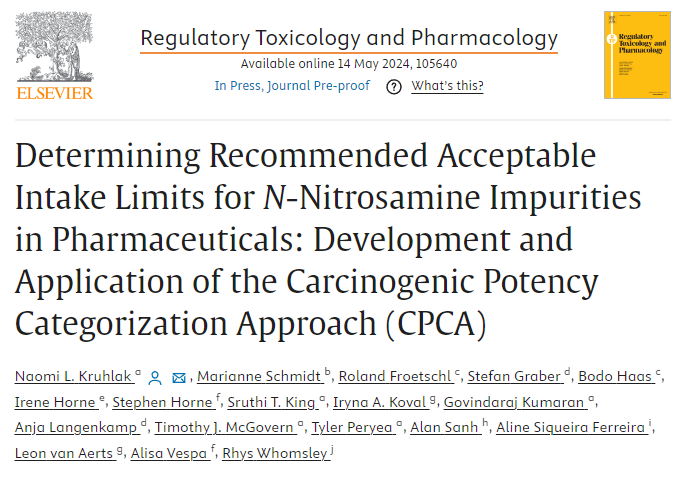This is one of those articles that delves into the behind-the-scenes of science. You will be able to follow the gestation, birth, and development of CPCA. Check out this article:

it covers the entire birth of CPCA. Here is a general analysis:
- Introduction:
- The article describes the approach of CPCA, a structure-activity relationship methodology adopted in 2023 for international regulatory guidance on assessing the safety of nitrosamine impurities in pharmaceutical products.
- CPCA utilizes structure-activity relationships to determine acceptable intake limits for nitrosamine impurities in pharmaceutical products.
- Development of CPCA:
- An international Nitrosamine Working Group (NITWG) was established to develop CPCA, involving experts in pharmacology, toxicology, chemistry, computational toxicology, and structure-activity relationships.
- The goal was to create a methodology that didn’t rely on robust data for a single surrogate compound in each Acceptable Intake (AI) assessment, allowing AI identification even when specific compound data isn’t available.
- CPCA builds upon previously published works and an evaluation of structure-activity relationships from a larger dataset of nitrosamine carcinogenicity.
- Dataset and Model Development:
- The training dataset included 81 nitrosamines with carcinogenicity data.
- Activating and deactivating structural characteristics of carcinogenic potency were identified, used to assign a Potency Category (PC) to each nitrosamine.
- Potency categories range from 1 (high potency) to 5 (low potency), with thresholds defined based on regional AI limits and toxicological concern limit for mutagenic impurities.
- Application of CPCA:
- CPCA allows consideration of the relative effects of multiple activating and deactivating characteristics on the molecule to predict carcinogenic potency and recommend an AI limit.
- Examples of applying CPCA to hypothetical impurity structures related to the active substance (NDSRIs) are provided in regulatory guidance.
- The applicability domain of CPCA is limited to compounds with a carbon atom directly linked to both sides of the N-nitroso group.
- Conclusions:
- CPCA serves as a practical tool to quickly determine recommended AI limits for nitrosamines based on structural characteristics.
- Further development of CPCA will be facilitated by the availability of new experimental mutagenicity testing data and metabolism studies.
- CPCA was developed to address situations where there were insufficient carcinogenicity data or where a structure-activity relationship assessment did not identify a suitable surrogate for cross-reading assessment.
Kudos to the authors!
Link: https://www.sciencedirect.com/science/article/pii/S0273230024000813